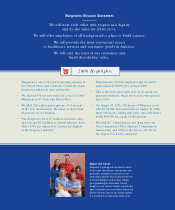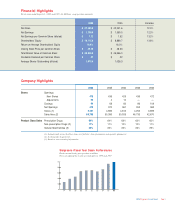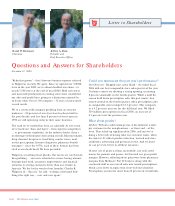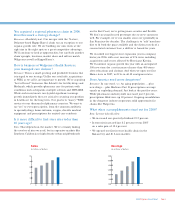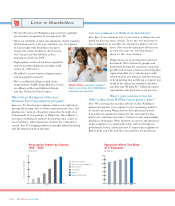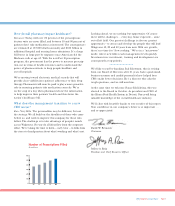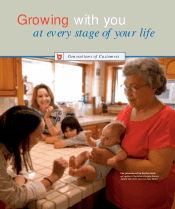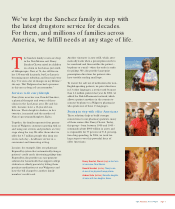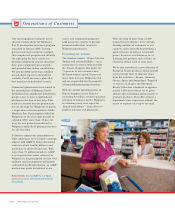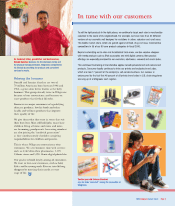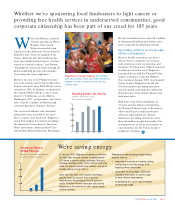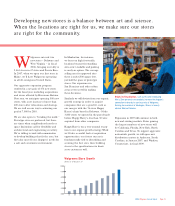Walgreens 2006 Annual Report Download - page 5
Download and view the complete annual report
Please find page 5 of the 2006 Walgreens annual report below. You can navigate through the pages in the report by either clicking on the pages listed below, or by using the keyword search tool below to find specific information within the annual report.
You acquired a regional pharmacy chain in 2006.
Does this mark a strategy change?
Bernauer: Absolutely not. Our merger with the 76-store,
Delaware-based Happy Harry’s chain was an exception to our
organic growth rule. We see building our own stores at the
right size in the right spots as a great competitive advantage.
We’ll continue to look at opportunities, but rarely do another
chain’s people, locations, market share and culture match
Walgreens as well as Happy Harry’s.
How is business at Walgreens Health Services,
your managed care division?
Bernauer: This is a small, growing and profitable business that
is integral to our strategy. Unlike our retail side, acquisitions
at WHS, as we call it, are important to growth. We’re acquiring
“best of breed” businesses like Schraft’s for fertility drugs and
Medmark, which provides pharmacy care for patients with
conditions such as hepatitis, multiple sclerosis and HIV/AIDS.
While such investments rarely yield significant earnings
growth immediately, they are critical to securing our position
in healthcare for the long term. Our goal is to “marry” WHS
services to our thousands of pharmacy counters. We want to
say “yes” to every prescription, from the common antibiotic
to specialty drugs, home infusion, oxygen, durable medical
equipment and prescriptions for assisted care residents.
Is it more difficult to find store sites today than
10 years ago?
Rein: That depends on the market. We’re certainly finding
the numbers of sites we need, but in expensive markets like
Southern California or high density urban neighborhoods
on the East Coast, we’re getting more creative and flexible.
We don’t necessarily need prototype sites to serve customers
well. For example, we’ve run smaller stores very profitably in
San Francisco for decades. The challenge is to “edit”merchan-
dise to fit both the space available and the distinct needs of a
concentrated customer base, a skill we’ve honed for years.
We recorded our biggest store expansion year in company
history in 2006, with a net increase of 476 stores including
acquisitions and stores affected by Hurricane Katrina.
We’ll continue organic growth this year with an anticipated
500 new stores for a net increase of more than 400 stores
after relocations and closings. And when we open our first
Maine store in 2007, we’ll be in all 48 contiguous states.
Does America need more drugstores?
Bernauer: In one word, yes. An aging population … plus
new drugs … plus Medicare Part D prescription coverage
equals an exploding demand. Just look at the past five years:
While pharmacies industry-wide increased just 2 percent,
prescriptions filled were up 18 percent. Ongoing consolidation
in the drugstore industry represents solid opportunity for
chains like Walgreens.
What other accomplishments stand out for 2006?
Rein: Let me tick off a few.
• We increased our quarterly dividend 19.2 percent.
• Inventories increased just 8.2 percent versus 2005
on a sales gain of 12.3 percent.
• We opened our first in-store health clinics in the
Kansas City and St. Louis markets.
2006 Walgreens Annual Report Page 3
Sales
In billions of dollars
Earnings
In millions of dollars


